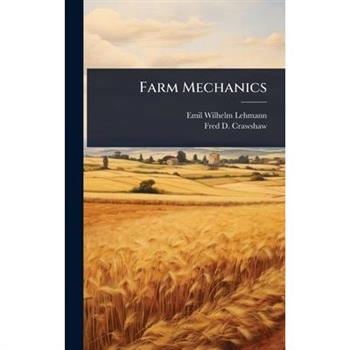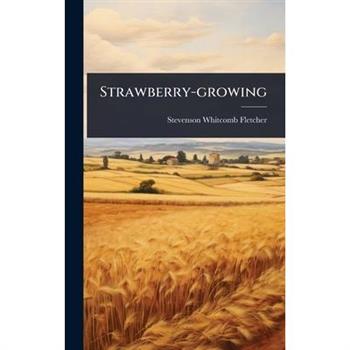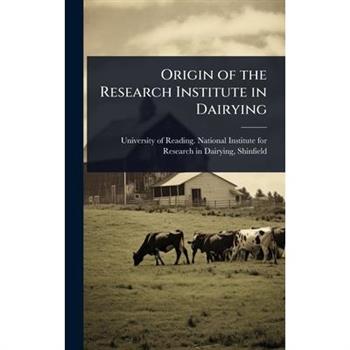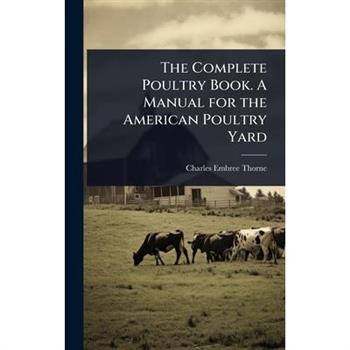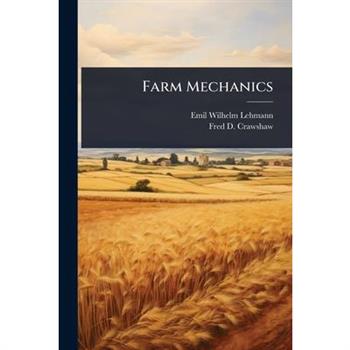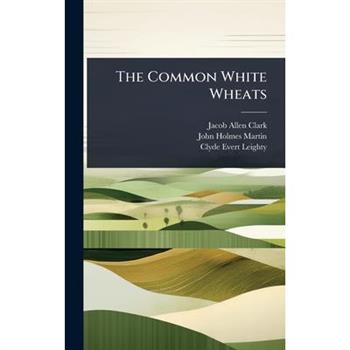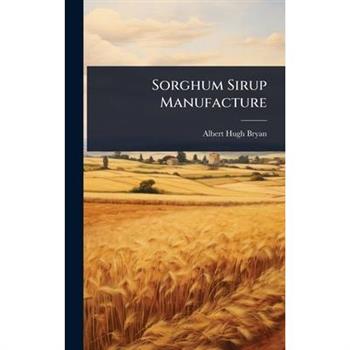Corn-belt Farmers’ Experience With Motor Trucks
Observations On The Vinous Fermentation
"Observations On The Vinous Fermentation" delves into the intricate processes of wine making and brewing. This work meticulously describes a patented apparatus designed to enhance fermentation, presenting a detailed examination of its functionality and benefits. The text includes testimonials confirming the advantages of this system, particularly when applied to brewing processes.This book offers valuable insights into the scientific and technical aspects of fermentation. It will appeal to historians of science and technology, as well as those interested in the historical methods of brewing and wine production.This work has been selected by scholars as being culturally important, and is part of the knowledge base of civilization as we know it. This work was reproduced from the original artifact, and remains as true to the original work as possible. Therefore, you will see the original copyright references, library stamps (as most of these works have been housed in our most important libraries around the world), and other notations in the work.This work is in the public domain in the United States of America, and possibly other nations. Within the United States, you may freely copy and distribute this work, as no entity (individual or corporate) has a copyright on the body of the work.As a reproduction of a historical artifact, this work may contain missing or blurred pages, poor pictures, errant marks, etc. Scholars believe, and we concur, that this work is important enough to be preserved, reproduced, and made generally available to the public. We appreciate your support of the preservation process, and thank you for being an important part of keeping this knowledge alive and relevant.
Corn-belt Farmers’ Experience With Motor Trucks
"Corn-belt Farmers' Experience With Motor Trucks" presents a detailed study of motor truck usage among farmers in the corn-belt region. Based on an analysis of 831 reports from farmers who own motor trucks, this book explores the practical aspects and economic impacts of adopting this technology in agricultural settings. Authored by Howard Ross Tolley and Lillian M. Church, this work provides valuable insights into the experiences of early adopters of motor trucks in farming. This study, originally published as Volumes 926-950, delves into various facets of motor truck ownership, including operational efficiency, cost-effectiveness, and the role of motor trucks in enhancing agricultural productivity. It offers a historical perspective on the integration of motorized transport into farming practices and remains relevant for understanding the evolution of agricultural technology.This work has been selected by scholars as being culturally important, and is part of the knowledge base of civilization as we know it. This work was reproduced from the original artifact, and remains as true to the original work as possible. Therefore, you will see the original copyright references, library stamps (as most of these works have been housed in our most important libraries around the world), and other notations in the work.This work is in the public domain in the United States of America, and possibly other nations. Within the United States, you may freely copy and distribute this work, as no entity (individual or corporate) has a copyright on the body of the work.As a reproduction of a historical artifact, this work may contain missing or blurred pages, poor pictures, errant marks, etc. Scholars believe, and we concur, that this work is important enough to be preserved, reproduced, and made generally available to the public. We appreciate your support of the preservation process, and thank you for being an important part of keeping this knowledge alive and relevant.
Ceylon Coffee Soils And Manures
Ceylon Coffee Soils and Manures: A Report to the Ceylon Coffee Planters' Association delves into the intricate relationship between soil composition and coffee cultivation in Ceylon (now Sri Lanka). Authored by John Hughes in collaboration with the Ceylon Coffee Planters' Association, this report provides a detailed analysis of the soil types prevalent in coffee-growing regions and the effectiveness of various manures in enhancing coffee yields. Originally published during the peak of Ceylon's coffee industry, this work offers valuable insights into the agricultural practices of the time. It explores the challenges faced by planters and the innovative solutions they employed to optimize their crops. This historical document will be of interest to agricultural historians, environmental scientists, and anyone curious about the rich heritage of Ceylon's coffee production.This work has been selected by scholars as being culturally important, and is part of the knowledge base of civilization as we know it. This work was reproduced from the original artifact, and remains as true to the original work as possible. Therefore, you will see the original copyright references, library stamps (as most of these works have been housed in our most important libraries around the world), and other notations in the work.This work is in the public domain in the United States of America, and possibly other nations. Within the United States, you may freely copy and distribute this work, as no entity (individual or corporate) has a copyright on the body of the work.As a reproduction of a historical artifact, this work may contain missing or blurred pages, poor pictures, errant marks, etc. Scholars believe, and we concur, that this work is important enough to be preserved, reproduced, and made generally available to the public. We appreciate your support of the preservation process, and thank you for being an important part of keeping this knowledge alive and relevant.
Analyses Of Commercial Fertilizers, Fertilizer Supplies And Home Mixtures
"Analyses Of Commercial Fertilizers, Fertilizer Supplies And Home Mixtures" offers a detailed examination of fertilizer composition and usage. Authored by Charles Sanderson Cathcart, this work provides comprehensive insights into the chemical analysis of commercial fertilizers, the sources of fertilizer supplies, and the creation of home mixtures. It is an invaluable resource for agricultural professionals, students, and anyone involved in farming or gardening who seeks to understand the scientific basis of plant nutrition. The book covers various analytical methods and their applications, contributing to the optimization of crop yields and sustainable agricultural practices.This work has been selected by scholars as being culturally important, and is part of the knowledge base of civilization as we know it. This work was reproduced from the original artifact, and remains as true to the original work as possible. Therefore, you will see the original copyright references, library stamps (as most of these works have been housed in our most important libraries around the world), and other notations in the work.This work is in the public domain in the United States of America, and possibly other nations. Within the United States, you may freely copy and distribute this work, as no entity (individual or corporate) has a copyright on the body of the work.As a reproduction of a historical artifact, this work may contain missing or blurred pages, poor pictures, errant marks, etc. Scholars believe, and we concur, that this work is important enough to be preserved, reproduced, and made generally available to the public. We appreciate your support of the preservation process, and thank you for being an important part of keeping this knowledge alive and relevant.
Transactions Of The Agricultural And Horticultural Society Of India
This volume of the "Transactions Of The Agricultural And Horticultural Society Of India" offers a fascinating glimpse into the agricultural and horticultural practices of 19th-century India. Compiled by the Agricultural & Horticultural Society of India, Volume 4 provides detailed insights into crop cultivation, gardening techniques, and the exchange of knowledge among agricultural enthusiasts of the time. A valuable historical record, this book showcases the efforts to improve agricultural methods and promote horticulture within the Indian subcontinent. Researchers, historians, and anyone interested in the evolution of agricultural science and the history of Indian agriculture will find this a compelling and informative resource.This work has been selected by scholars as being culturally important, and is part of the knowledge base of civilization as we know it. This work was reproduced from the original artifact, and remains as true to the original work as possible. Therefore, you will see the original copyright references, library stamps (as most of these works have been housed in our most important libraries around the world), and other notations in the work.This work is in the public domain in the United States of America, and possibly other nations. Within the United States, you may freely copy and distribute this work, as no entity (individual or corporate) has a copyright on the body of the work.As a reproduction of a historical artifact, this work may contain missing or blurred pages, poor pictures, errant marks, etc. Scholars believe, and we concur, that this work is important enough to be preserved, reproduced, and made generally available to the public. We appreciate your support of the preservation process, and thank you for being an important part of keeping this knowledge alive and relevant.
The Southdown Flock Book
The Southdown Flock Book, Volume 15, compiled by the Southdown Sheep Society, provides a detailed record of Southdown sheep flocks. This volume serves as an invaluable resource for breeders, farmers, and historians interested in the Southdown breed. Detailing lineage, breeding practices, and flock management, this book offers insights into the efforts to maintain and improve this important breed of sheep. A vital addition to any agricultural library, it preserves essential data for future generations of livestock enthusiasts.This work has been selected by scholars as being culturally important, and is part of the knowledge base of civilization as we know it. This work was reproduced from the original artifact, and remains as true to the original work as possible. Therefore, you will see the original copyright references, library stamps (as most of these works have been housed in our most important libraries around the world), and other notations in the work.This work is in the public domain in the United States of America, and possibly other nations. Within the United States, you may freely copy and distribute this work, as no entity (individual or corporate) has a copyright on the body of the work.As a reproduction of a historical artifact, this work may contain missing or blurred pages, poor pictures, errant marks, etc. Scholars believe, and we concur, that this work is important enough to be preserved, reproduced, and made generally available to the public. We appreciate your support of the preservation process, and thank you for being an important part of keeping this knowledge alive and relevant.
The Common White Wheats
"The Common White Wheats" is a detailed study of various common white wheat varieties, offering comprehensive insights into their agronomic characteristics, cultivation, and uses. Authored by Jacob Allen Clark, John Holmes Martin, and Clyde Evert Leighty, this work is an invaluable resource for agricultural scientists, farmers, and students interested in understanding the nuances of wheat production. The book explores the different types of white wheat, providing detailed descriptions and comparative analyses. Its enduring value lies in its thoroughness and practical applications, making it a key reference for anyone involved in cereal crop research and cultivation. Readers will gain a deeper understanding of the qualities that define common white wheats and their significance in global agriculture.This work has been selected by scholars as being culturally important, and is part of the knowledge base of civilization as we know it. This work was reproduced from the original artifact, and remains as true to the original work as possible. Therefore, you will see the original copyright references, library stamps (as most of these works have been housed in our most important libraries around the world), and other notations in the work.This work is in the public domain in the United States of America, and possibly other nations. Within the United States, you may freely copy and distribute this work, as no entity (individual or corporate) has a copyright on the body of the work.As a reproduction of a historical artifact, this work may contain missing or blurred pages, poor pictures, errant marks, etc. Scholars believe, and we concur, that this work is important enough to be preserved, reproduced, and made generally available to the public. We appreciate your support of the preservation process, and thank you for being an important part of keeping this knowledge alive and relevant.
The Silo And Silage In Indiana
"The Silo And Silage In Indiana" by Charles Sumner Plumb offers a detailed look at the construction, use, and benefits of silos and silage in early 20th-century Indiana agriculture. This book delves into the practical aspects of silo design, materials, and the process of creating and utilizing silage as feed for livestock. A valuable resource for understanding historical farming methods, this work explores the economic and nutritional advantages of silage, contributing to a deeper understanding of agricultural technology and its impact on local farming communities. It is a fascinating read for anyone interested in the history of agriculture and the evolution of farming practices in the American Midwest.This work has been selected by scholars as being culturally important, and is part of the knowledge base of civilization as we know it. This work was reproduced from the original artifact, and remains as true to the original work as possible. Therefore, you will see the original copyright references, library stamps (as most of these works have been housed in our most important libraries around the world), and other notations in the work.This work is in the public domain in the United States of America, and possibly other nations. Within the United States, you may freely copy and distribute this work, as no entity (individual or corporate) has a copyright on the body of the work.As a reproduction of a historical artifact, this work may contain missing or blurred pages, poor pictures, errant marks, etc. Scholars believe, and we concur, that this work is important enough to be preserved, reproduced, and made generally available to the public. We appreciate your support of the preservation process, and thank you for being an important part of keeping this knowledge alive and relevant.
Strawberry Culture
璽€œStrawberry Culture: South Atlantic And Gulf Coast Regions璽€ by George McMillan Darrow, is a detailed guide to growing strawberries in the specific climates of the South Atlantic and Gulf Coast regions. This book provides practical advice and methods for successful strawberry cultivation, covering topics such as soil preparation, variety selection, planting techniques, pest and disease management, and harvesting. A valuable resource for farmers, gardeners, and agricultural students, 璽€œStrawberry Culture璽€ offers insights into maximizing yields and producing high-quality strawberries in challenging environments. Its focus on regional adaptations makes it an essential reference for anyone involved in strawberry production in these areas. This work has been selected by scholars as being culturally important, and is part of the knowledge base of civilization as we know it. This work was reproduced from the original artifact, and remains as true to the original work as possible. Therefore, you will see the original copyright references, library stamps (as most of these works have been housed in our most important libraries around the world), and other notations in the work.This work is in the public domain in the United States of America, and possibly other nations. Within the United States, you may freely copy and distribute this work, as no entity (individual or corporate) has a copyright on the body of the work.As a reproduction of a historical artifact, this work may contain missing or blurred pages, poor pictures, errant marks, etc. Scholars believe, and we concur, that this work is important enough to be preserved, reproduced, and made generally available to the public. We appreciate your support of the preservation process, and thank you for being an important part of keeping this knowledge alive and relevant.
Sorghum Sirup Manufacture
"Sorghum Sirup Manufacture" is a detailed guide to the traditional processes involved in producing sorghum syrup. Written by Albert Hugh Bryan, this book provides a comprehensive overview of sorghum cultivation, harvesting, and the various techniques used to extract and process the syrup. Explore the equipment, methods, and best practices that were essential for successful sorghum syrup production in earlier times. This book offers valuable insights into a time-honored agricultural practice, making it an interesting read for those involved in agriculture, food history, or traditional foodways.This work has been selected by scholars as being culturally important, and is part of the knowledge base of civilization as we know it. This work was reproduced from the original artifact, and remains as true to the original work as possible. Therefore, you will see the original copyright references, library stamps (as most of these works have been housed in our most important libraries around the world), and other notations in the work.This work is in the public domain in the United States of America, and possibly other nations. Within the United States, you may freely copy and distribute this work, as no entity (individual or corporate) has a copyright on the body of the work.As a reproduction of a historical artifact, this work may contain missing or blurred pages, poor pictures, errant marks, etc. Scholars believe, and we concur, that this work is important enough to be preserved, reproduced, and made generally available to the public. We appreciate your support of the preservation process, and thank you for being an important part of keeping this knowledge alive and relevant.
Nano-Bioinoculants
Nano-bioinoculants: Smart Tools for Modern Agriculture discusses the interactions between nanoparticles and soil-plants-microbiome systems in a single-volume book designed to guide improvements in sustainable agriculture i.e. plant production and soil health. Past practices for the application of pesticides and chemical fertilizers have reduced the beneficial microbial diversity and soil fertility essential for optimal crop yield and overall plant health. As a result, developing innovative approaches to plant/soil health maintenance, bioremediation process, and stress management is advancing. Plant protection methods are increasingly being tailored to improve sustainable precision results, reduce environmental impact, and to target specific plant health challenges. Nano-bioinoculants: Smart Tools for Modern Agriculture explains nanoparticles and beneficial microbes and their impact on soil microbiomes, soil fertility restoration, remediation of contaminated soil, and plant health. It also highlights nanoparticles and bioinoculants in stress management, plant growth, and productivity, as well as covering the potentially toxic effect of nanoparticles on humans and the environment. This volume in the Nanomaterial-Plant Interactions series explores the potential of nano-biotechnology for better agronomic performance and sustainability.
Bottom-Up Beekeeping
Are you interested in understanding your bees more and disturbing them less?Learn how to use the debris from the hive floor as an indicator of colony activity and a way to interpret what's happening inside and outside of the colony. This book is based upon a DIY research project about how the debris from honey bees changes over a year. Ray uses these observations for a deep-dive into the scientific literature to explain the debris and relates this to beekeeping practice. More than two hundred high quality images give a fascinating insight into life of a honey bee colony.Ray Baxter's passion for beekeeping started fifteen years ago when he was working as a biology teacher. His initial plan was to learn more about honey bees and share this experience with high school students in the biology classroom. This quickly developed from being an occasional lesson into an extra curricula bee club, to putting beekeeping on the school timetable as a Scottish National Progression Award (GCSE level) and supporting other schools with the development of their own beekeeping qualifications. It's a journey that has been inspired by the enthusiasm of young people and the questions that they ask. In fact, the idea for this book came from a discussion with youngsters who were counting mites on the inspection board and who became side tracked by other finds in the debris.
The Book Of Ensilage
璽€œThe Book Of Ensilage: Or, The New Dispensation For Farmers璽€ explores the innovative method of ensilage, offering farmers a comprehensive guide to preserving fodder. John M. Bailey delves into the benefits of this technique, emphasizing its potential to revolutionize agricultural practices. This work details the processes involved in creating high-quality silage, ensuring a consistent and nutritious feed source for livestock throughout the year. Bailey's insights into the practical application of ensilage are invaluable for those seeking to enhance their farm's productivity and efficiency. Discover the advantages of ensilage as a sustainable solution for modern farming, promising a new era of prosperity for agricultural communities. This book remains a testament to the enduring importance of agricultural innovation. This work has been selected by scholars as being culturally important, and is part of the knowledge base of civilization as we know it. This work was reproduced from the original artifact, and remains as true to the original work as possible. Therefore, you will see the original copyright references, library stamps (as most of these works have been housed in our most important libraries around the world), and other notations in the work.This work is in the public domain in the United States of America, and possibly other nations. Within the United States, you may freely copy and distribute this work, as no entity (individual or corporate) has a copyright on the body of the work.As a reproduction of a historical artifact, this work may contain missing or blurred pages, poor pictures, errant marks, etc. Scholars believe, and we concur, that this work is important enough to be preserved, reproduced, and made generally available to the public. We appreciate your support of the preservation process, and thank you for being an important part of keeping this knowledge alive and relevant.
The Production Of Good Seed Corn
"The Production Of Good Seed Corn," by Charles Pinckney Hartley, offers a detailed examination of the principles and practices involved in cultivating high-quality seed corn. This book provides valuable insights into the selection, breeding, and harvesting techniques essential for ensuring a successful corn crop. Aimed at both seasoned farmers and those new to agriculture, Hartley's work covers various aspects, from understanding the genetic characteristics of corn to implementing effective methods for improving seed quality. With its comprehensive approach and practical advice, this book serves as an indispensable resource for anyone looking to enhance their corn production. It emphasizes the importance of careful observation, experimentation, and continuous improvement in the pursuit of agricultural excellence. Explore the time-tested methods and underlying scientific principles that contribute to the creation of superior seed corn and, ultimately, a bountiful harvest.This work has been selected by scholars as being culturally important, and is part of the knowledge base of civilization as we know it. This work was reproduced from the original artifact, and remains as true to the original work as possible. Therefore, you will see the original copyright references, library stamps (as most of these works have been housed in our most important libraries around the world), and other notations in the work.This work is in the public domain in the United States of America, and possibly other nations. Within the United States, you may freely copy and distribute this work, as no entity (individual or corporate) has a copyright on the body of the work.As a reproduction of a historical artifact, this work may contain missing or blurred pages, poor pictures, errant marks, etc. Scholars believe, and we concur, that this work is important enough to be preserved, reproduced, and made generally available to the public. We appreciate your support of the preservation process, and thank you for being an important part of keeping this knowledge alive and relevant.
Commercial Forestry in Britain. Its Decline and Revival
璽€œCommercial Forestry in Britain: Its Decline and Revival璽€ examines the historical trends in British forestry practices. This book analyzes the causes of deforestation and the decline of the timber industry in Britain, further proposing strategies for revival through sustainable forest management. It covers topics such as afforestation, the economic implications of forestry, and the importance of timber as a resource. Written by Edward Percy Stebbing, this work serves as an invaluable resource for those interested in the history of forestry and natural resource management in Britain.This work has been selected by scholars as being culturally important, and is part of the knowledge base of civilization as we know it. This work was reproduced from the original artifact, and remains as true to the original work as possible. Therefore, you will see the original copyright references, library stamps (as most of these works have been housed in our most important libraries around the world), and other notations in the work.This work is in the public domain in the United States of America, and possibly other nations. Within the United States, you may freely copy and distribute this work, as no entity (individual or corporate) has a copyright on the body of the work.As a reproduction of a historical artifact, this work may contain missing or blurred pages, poor pictures, errant marks, etc. Scholars believe, and we concur, that this work is important enough to be preserved, reproduced, and made generally available to the public. We appreciate your support of the preservation process, and thank you for being an important part of keeping this knowledge alive and relevant.
Manual of Agriculture, for the School, the Farm, and the Fireside
"Manual of Agriculture, for the School, the Farm, and the Fireside" is a comprehensive guide to agricultural practices, originally published in 1890. Authored by Charles Louis Flint, George B. Emerson, and Charles A. Goessmann, this manual provides detailed insights into various aspects of farming, crop cultivation, and soil management. Designed for both educational use and practical application, it serves as a valuable resource for students, farmers, and anyone interested in understanding the principles of agriculture. The book covers a wide range of topics, offering timeless knowledge and techniques that remain relevant in modern agricultural contexts. It is a significant historical record reflecting the agricultural practices of the late 19th century.This work has been selected by scholars as being culturally important, and is part of the knowledge base of civilization as we know it. This work was reproduced from the original artifact, and remains as true to the original work as possible. Therefore, you will see the original copyright references, library stamps (as most of these works have been housed in our most important libraries around the world), and other notations in the work.This work is in the public domain in the United States of America, and possibly other nations. Within the United States, you may freely copy and distribute this work, as no entity (individual or corporate) has a copyright on the body of the work.As a reproduction of a historical artifact, this work may contain missing or blurred pages, poor pictures, errant marks, etc. Scholars believe, and we concur, that this work is important enough to be preserved, reproduced, and made generally available to the public. We appreciate your support of the preservation process, and thank you for being an important part of keeping this knowledge alive and relevant.
Agriculture and Trade Machinery Series. [1923-1925]
"Agriculture and Trade Machinery Series. [1923-1925]" offers a fascinating glimpse into the state of agricultural technology and international trade practices in the early 20th century. Compiled by British standard exporter, this collection provides insights into the machinery used in agriculture during that period, reflecting the engineering advancements and trade relationships of the time. This series serves as a valuable resource for historians, engineers, and anyone interested in the evolution of agricultural practices and the machinery that supported them. It showcases the British contribution to global agricultural technology and highlights the economic activities surrounding the trade of these essential tools. The detailed information within provides a unique perspective on a pivotal era in agricultural and industrial history.This work has been selected by scholars as being culturally important, and is part of the knowledge base of civilization as we know it. This work was reproduced from the original artifact, and remains as true to the original work as possible. Therefore, you will see the original copyright references, library stamps (as most of these works have been housed in our most important libraries around the world), and other notations in the work.This work is in the public domain in the United States of America, and possibly other nations. Within the United States, you may freely copy and distribute this work, as no entity (individual or corporate) has a copyright on the body of the work.As a reproduction of a historical artifact, this work may contain missing or blurred pages, poor pictures, errant marks, etc. Scholars believe, and we concur, that this work is important enough to be preserved, reproduced, and made generally available to the public. We appreciate your support of the preservation process, and thank you for being an important part of keeping this knowledge alive and relevant.
The Microscope in the Brewery and Malt-house
"The Microscope in the Brewery and Malt-house" offers a detailed exploration of the application of microscopy in the brewing and malting industries. Originally published in 1889, this book provides practical guidance on using microscopes to analyze and understand the processes involved in beer production. Chas Geo. Matthews and Francis Edw. Lott delve into the examination of raw materials like barley and hops, the monitoring of fermentation, and the identification of microorganisms that influence the quality of the final product.This historical text is invaluable for those interested in the science behind brewing and the early use of microscopy in industrial settings. It presents a blend of scientific rigor and practical application, making it a useful resource for both historical context and a deeper understanding of traditional brewing techniques.This work has been selected by scholars as being culturally important, and is part of the knowledge base of civilization as we know it. This work was reproduced from the original artifact, and remains as true to the original work as possible. Therefore, you will see the original copyright references, library stamps (as most of these works have been housed in our most important libraries around the world), and other notations in the work.This work is in the public domain in the United States of America, and possibly other nations. Within the United States, you may freely copy and distribute this work, as no entity (individual or corporate) has a copyright on the body of the work.As a reproduction of a historical artifact, this work may contain missing or blurred pages, poor pictures, errant marks, etc. Scholars believe, and we concur, that this work is important enough to be preserved, reproduced, and made generally available to the public. We appreciate your support of the preservation process, and thank you for being an important part of keeping this knowledge alive and relevant.
On Ensilage of Green Forage Crops in Silos; Experience With Ensilage at Echo Dale Farm, Also the Practical Experience of Twenty-five Practical Farmers
This vintage treatise, "On Ensilage of Green Forage Crops in Silos," explores the then-innovative method of preserving green fodder through ensilage. Compiled in 1881 by Henry R Stevens, the work details the practical application of ensilage techniques at Echo Dale Farm. Beyond the experiences at Echo Dale Farm, the book incorporates insights from twenty-five farmers, offering a multifaceted perspective on the benefits and challenges of using silos for preserving forage. This combination of detailed case study and broader experiential knowledge makes this a valuable document for understanding the historical development of agricultural practices and the adoption of new technologies in farming.This work has been selected by scholars as being culturally important, and is part of the knowledge base of civilization as we know it. This work was reproduced from the original artifact, and remains as true to the original work as possible. Therefore, you will see the original copyright references, library stamps (as most of these works have been housed in our most important libraries around the world), and other notations in the work.This work is in the public domain in the United States of America, and possibly other nations. Within the United States, you may freely copy and distribute this work, as no entity (individual or corporate) has a copyright on the body of the work.As a reproduction of a historical artifact, this work may contain missing or blurred pages, poor pictures, errant marks, etc. Scholars believe, and we concur, that this work is important enough to be preserved, reproduced, and made generally available to the public. We appreciate your support of the preservation process, and thank you for being an important part of keeping this knowledge alive and relevant.
Origin of the Research Institute in Dairying
Origin of the Research Institute in Dairying recounts the early history of the National Institute for Research in Dairying (NIRD) associated with the University of Reading. This historical record details the founding and initial development of the institute, a pivotal center for dairy research in the United Kingdom. The book offers insights into the challenges and innovations in dairy science during the early 20th century, providing valuable context for understanding modern agricultural practices. It will be of interest to historians of science, agricultural researchers, and anyone interested in the evolution of dairy farming and food science.This work has been selected by scholars as being culturally important, and is part of the knowledge base of civilization as we know it. This work was reproduced from the original artifact, and remains as true to the original work as possible. Therefore, you will see the original copyright references, library stamps (as most of these works have been housed in our most important libraries around the world), and other notations in the work.This work is in the public domain in the United States of America, and possibly other nations. Within the United States, you may freely copy and distribute this work, as no entity (individual or corporate) has a copyright on the body of the work.As a reproduction of a historical artifact, this work may contain missing or blurred pages, poor pictures, errant marks, etc. Scholars believe, and we concur, that this work is important enough to be preserved, reproduced, and made generally available to the public. We appreciate your support of the preservation process, and thank you for being an important part of keeping this knowledge alive and relevant.
Cotton, the Most Widely Used Staple in the World
Dive into the world of cotton with "Cotton, the Most Widely Used Staple in the World," a comprehensive overview published in 1909 by the International Bureau of the American Republics. This work explores the cultivation, trade, and economic significance of cotton, particularly in the context of the early 20th century. It examines cotton production methods, the regions where it was grown, and its impact on global commerce. Readers gain valuable insights into the role of cotton in shaping agricultural practices and international relations during a pivotal era. This book is an essential resource for historians, economists, and anyone interested in the story behind one of the world's most important commodities.This work has been selected by scholars as being culturally important, and is part of the knowledge base of civilization as we know it. This work was reproduced from the original artifact, and remains as true to the original work as possible. Therefore, you will see the original copyright references, library stamps (as most of these works have been housed in our most important libraries around the world), and other notations in the work.This work is in the public domain in the United States of America, and possibly other nations. Within the United States, you may freely copy and distribute this work, as no entity (individual or corporate) has a copyright on the body of the work.As a reproduction of a historical artifact, this work may contain missing or blurred pages, poor pictures, errant marks, etc. Scholars believe, and we concur, that this work is important enough to be preserved, reproduced, and made generally available to the public. We appreciate your support of the preservation process, and thank you for being an important part of keeping this knowledge alive and relevant.
The Complete Poultry Book. A Manual for the American Poultry Yard
The Complete Poultry Book, penned by Charles Embree Thorne, offers a comprehensive guide to poultry management in the American farmyard. Originally published in 1882, this manual presents detailed insights into the practical aspects of raising chickens and other domestic fowl. Thorne璽€(TM)s work covers various aspects, from selecting breeds to constructing suitable housing and managing feeding practices. It provides valuable guidance for both novice and experienced poultry keepers, reflecting the agricultural practices and priorities of the late 19th century. This book is a fascinating glimpse into historical animal husbandry and remains a useful resource for those interested in heritage farming techniques and the history of agriculture.This work has been selected by scholars as being culturally important, and is part of the knowledge base of civilization as we know it. This work was reproduced from the original artifact, and remains as true to the original work as possible. Therefore, you will see the original copyright references, library stamps (as most of these works have been housed in our most important libraries around the world), and other notations in the work.This work is in the public domain in the United States of America, and possibly other nations. Within the United States, you may freely copy and distribute this work, as no entity (individual or corporate) has a copyright on the body of the work.As a reproduction of a historical artifact, this work may contain missing or blurred pages, poor pictures, errant marks, etc. Scholars believe, and we concur, that this work is important enough to be preserved, reproduced, and made generally available to the public. We appreciate your support of the preservation process, and thank you for being an important part of keeping this knowledge alive and relevant.
Du Pont Farmer’s Handbook; Instructions in the use of Dynamite for Clearing Land, Planting and Cultivating Trees, Drainage, Ditching and Subsoiling
This handbook, "Du Pont Farmer's Handbook; Instructions in the use of Dynamite for Clearing Land, Planting and Cultivating Trees, Drainage, Ditching and Subsoiling," published in 1912 by E.I. Du Pont De Nemours & Company, provides detailed instructions for agricultural applications of dynamite. It offers a fascinating glimpse into early 20th-century farming practices and the use of industrial explosives in land management. The book covers a range of topics, from clearing land and planting trees to drainage and subsoiling techniques, all utilizing Du Pont's dynamite products. It serves as a valuable historical document illustrating the intersection of industry and agriculture during a period of significant technological advancement. This practical guide showcases the innovative approaches used by farmers to improve their land and increase productivity with the aid of modern explosives.This work has been selected by scholars as being culturally important, and is part of the knowledge base of civilization as we know it. This work was reproduced from the original artifact, and remains as true to the original work as possible. Therefore, you will see the original copyright references, library stamps (as most of these works have been housed in our most important libraries around the world), and other notations in the work.This work is in the public domain in the United States of America, and possibly other nations. Within the United States, you may freely copy and distribute this work, as no entity (individual or corporate) has a copyright on the body of the work.As a reproduction of a historical artifact, this work may contain missing or blurred pages, poor pictures, errant marks, etc. Scholars believe, and we concur, that this work is important enough to be preserved, reproduced, and made generally available to the public. We appreciate your support of the preservation process, and thank you for being an important part of keeping this knowledge alive and relevant.
Farm Manures
Farm Manures, by Charles Embree Thorne, presents a comprehensive examination of the use and impact of manures in agricultural practices. Originally published in 1914, this enduring work explores the composition, handling, and application of farm manures to enhance soil fertility and crop yields. Thorne delves into the scientific principles underlying manure's effectiveness, offering practical guidance for farmers seeking to optimize their land management techniques. The book covers a range of topics, including the different types of manures, their nutrient content, and their effects on various soil types. It also discusses methods for storing and applying manures to minimize nutrient loss and maximize their benefits. With its detailed analysis and practical recommendations, Farm Manures remains a valuable resource for anyone interested in sustainable farming practices and the importance of organic soil amendments.This work has been selected by scholars as being culturally important, and is part of the knowledge base of civilization as we know it. This work was reproduced from the original artifact, and remains as true to the original work as possible. Therefore, you will see the original copyright references, library stamps (as most of these works have been housed in our most important libraries around the world), and other notations in the work.This work is in the public domain in the United States of America, and possibly other nations. Within the United States, you may freely copy and distribute this work, as no entity (individual or corporate) has a copyright on the body of the work.As a reproduction of a historical artifact, this work may contain missing or blurred pages, poor pictures, errant marks, etc. Scholars believe, and we concur, that this work is important enough to be preserved, reproduced, and made generally available to the public. We appreciate your support of the preservation process, and thank you for being an important part of keeping this knowledge alive and relevant.
On Ensilage of Green Forage Crops in Silos; Experience With Ensilage at Echo Dale Farm, Also the Practical Experience of Twenty-five Practical Farmers
This vintage treatise, "On Ensilage of Green Forage Crops in Silos," explores the then-innovative method of preserving green fodder through ensilage. Compiled in 1881 by Henry R Stevens, the work details the practical application of ensilage techniques at Echo Dale Farm. Beyond the experiences at Echo Dale Farm, the book incorporates insights from twenty-five farmers, offering a multifaceted perspective on the benefits and challenges of using silos for preserving forage. This combination of detailed case study and broader experiential knowledge makes this a valuable document for understanding the historical development of agricultural practices and the adoption of new technologies in farming.This work has been selected by scholars as being culturally important, and is part of the knowledge base of civilization as we know it. This work was reproduced from the original artifact, and remains as true to the original work as possible. Therefore, you will see the original copyright references, library stamps (as most of these works have been housed in our most important libraries around the world), and other notations in the work.This work is in the public domain in the United States of America, and possibly other nations. Within the United States, you may freely copy and distribute this work, as no entity (individual or corporate) has a copyright on the body of the work.As a reproduction of a historical artifact, this work may contain missing or blurred pages, poor pictures, errant marks, etc. Scholars believe, and we concur, that this work is important enough to be preserved, reproduced, and made generally available to the public. We appreciate your support of the preservation process, and thank you for being an important part of keeping this knowledge alive and relevant.
Du Pont Farmer’s Handbook; Instructions in the use of Dynamite for Clearing Land, Planting and Cultivating Trees, Drainage, Ditching and Subsoiling
This handbook, "Du Pont Farmer's Handbook; Instructions in the use of Dynamite for Clearing Land, Planting and Cultivating Trees, Drainage, Ditching and Subsoiling," published in 1912 by E.I. Du Pont De Nemours & Company, provides detailed instructions for agricultural applications of dynamite. It offers a fascinating glimpse into early 20th-century farming practices and the use of industrial explosives in land management. The book covers a range of topics, from clearing land and planting trees to drainage and subsoiling techniques, all utilizing Du Pont's dynamite products. It serves as a valuable historical document illustrating the intersection of industry and agriculture during a period of significant technological advancement. This practical guide showcases the innovative approaches used by farmers to improve their land and increase productivity with the aid of modern explosives.This work has been selected by scholars as being culturally important, and is part of the knowledge base of civilization as we know it. This work was reproduced from the original artifact, and remains as true to the original work as possible. Therefore, you will see the original copyright references, library stamps (as most of these works have been housed in our most important libraries around the world), and other notations in the work.This work is in the public domain in the United States of America, and possibly other nations. Within the United States, you may freely copy and distribute this work, as no entity (individual or corporate) has a copyright on the body of the work.As a reproduction of a historical artifact, this work may contain missing or blurred pages, poor pictures, errant marks, etc. Scholars believe, and we concur, that this work is important enough to be preserved, reproduced, and made generally available to the public. We appreciate your support of the preservation process, and thank you for being an important part of keeping this knowledge alive and relevant.
Agriculture and Trade Machinery Series. [1923-1925]
"Agriculture and Trade Machinery Series. [1923-1925]" offers a fascinating glimpse into the state of agricultural technology and international trade practices in the early 20th century. Compiled by British standard exporter, this collection provides insights into the machinery used in agriculture during that period, reflecting the engineering advancements and trade relationships of the time. This series serves as a valuable resource for historians, engineers, and anyone interested in the evolution of agricultural practices and the machinery that supported them. It showcases the British contribution to global agricultural technology and highlights the economic activities surrounding the trade of these essential tools. The detailed information within provides a unique perspective on a pivotal era in agricultural and industrial history.This work has been selected by scholars as being culturally important, and is part of the knowledge base of civilization as we know it. This work was reproduced from the original artifact, and remains as true to the original work as possible. Therefore, you will see the original copyright references, library stamps (as most of these works have been housed in our most important libraries around the world), and other notations in the work.This work is in the public domain in the United States of America, and possibly other nations. Within the United States, you may freely copy and distribute this work, as no entity (individual or corporate) has a copyright on the body of the work.As a reproduction of a historical artifact, this work may contain missing or blurred pages, poor pictures, errant marks, etc. Scholars believe, and we concur, that this work is important enough to be preserved, reproduced, and made generally available to the public. We appreciate your support of the preservation process, and thank you for being an important part of keeping this knowledge alive and relevant.
Farm Mechanics
"Farm Mechanics", originally published in 1922, is a comprehensive guide to the mechanical principles and practical applications essential for successful farming. Written by Emil Wilhelm Lehmann and Fred D. Crawshaw, this book offers detailed explanations and illustrations covering a wide range of topics, including farm machinery, tractors, and general agricultural engineering. This book is a valuable resource for students, educators, and anyone interested in the historical development of agricultural technology. It provides a solid foundation in the mechanics of farming, making it a timeless reference for understanding the principles behind modern agricultural practices.This work has been selected by scholars as being culturally important, and is part of the knowledge base of civilization as we know it. This work was reproduced from the original artifact, and remains as true to the original work as possible. Therefore, you will see the original copyright references, library stamps (as most of these works have been housed in our most important libraries around the world), and other notations in the work.This work is in the public domain in the United States of America, and possibly other nations. Within the United States, you may freely copy and distribute this work, as no entity (individual or corporate) has a copyright on the body of the work.As a reproduction of a historical artifact, this work may contain missing or blurred pages, poor pictures, errant marks, etc. Scholars believe, and we concur, that this work is important enough to be preserved, reproduced, and made generally available to the public. We appreciate your support of the preservation process, and thank you for being an important part of keeping this knowledge alive and relevant.
The Southdown Flock Book
The Southdown Flock Book, Volume 15, compiled by the Southdown Sheep Society, provides a detailed record of Southdown sheep flocks. This volume serves as an invaluable resource for breeders, farmers, and historians interested in the Southdown breed. Detailing lineage, breeding practices, and flock management, this book offers insights into the efforts to maintain and improve this important breed of sheep. A vital addition to any agricultural library, it preserves essential data for future generations of livestock enthusiasts.This work has been selected by scholars as being culturally important, and is part of the knowledge base of civilization as we know it. This work was reproduced from the original artifact, and remains as true to the original work as possible. Therefore, you will see the original copyright references, library stamps (as most of these works have been housed in our most important libraries around the world), and other notations in the work.This work is in the public domain in the United States of America, and possibly other nations. Within the United States, you may freely copy and distribute this work, as no entity (individual or corporate) has a copyright on the body of the work.As a reproduction of a historical artifact, this work may contain missing or blurred pages, poor pictures, errant marks, etc. Scholars believe, and we concur, that this work is important enough to be preserved, reproduced, and made generally available to the public. We appreciate your support of the preservation process, and thank you for being an important part of keeping this knowledge alive and relevant.
Commercial Forestry in Britain. Its Decline and Revival
璽€œCommercial Forestry in Britain: Its Decline and Revival璽€ examines the historical trends in British forestry practices. This book analyzes the causes of deforestation and the decline of the timber industry in Britain, further proposing strategies for revival through sustainable forest management. It covers topics such as afforestation, the economic implications of forestry, and the importance of timber as a resource. Written by Edward Percy Stebbing, this work serves as an invaluable resource for those interested in the history of forestry and natural resource management in Britain.This work has been selected by scholars as being culturally important, and is part of the knowledge base of civilization as we know it. This work was reproduced from the original artifact, and remains as true to the original work as possible. Therefore, you will see the original copyright references, library stamps (as most of these works have been housed in our most important libraries around the world), and other notations in the work.This work is in the public domain in the United States of America, and possibly other nations. Within the United States, you may freely copy and distribute this work, as no entity (individual or corporate) has a copyright on the body of the work.As a reproduction of a historical artifact, this work may contain missing or blurred pages, poor pictures, errant marks, etc. Scholars believe, and we concur, that this work is important enough to be preserved, reproduced, and made generally available to the public. We appreciate your support of the preservation process, and thank you for being an important part of keeping this knowledge alive and relevant.
Strawberry-growing
Strawberry-growing, by Stevenson Whitcomb Fletcher, offers a comprehensive guide to the cultivation of strawberries. Originally published in 1917, this practical manual provides detailed instructions on all aspects of strawberry production, from selecting the right varieties to managing pests and diseases. Fletcher璽€(TM)s expertise shines through in his clear, concise explanations, making this book an invaluable resource for both novice and experienced growers. Explore topics such as soil preparation, planting techniques, fertilization, and harvesting methods. Whether you're a commercial farmer or a home gardener, "Strawberry-growing" provides the knowledge you need to achieve bountiful yields of delicious strawberries. Discover the time-tested secrets to successful strawberry farming in this classic guide.This work has been selected by scholars as being culturally important, and is part of the knowledge base of civilization as we know it. This work was reproduced from the original artifact, and remains as true to the original work as possible. Therefore, you will see the original copyright references, library stamps (as most of these works have been housed in our most important libraries around the world), and other notations in the work.This work is in the public domain in the United States of America, and possibly other nations. Within the United States, you may freely copy and distribute this work, as no entity (individual or corporate) has a copyright on the body of the work.As a reproduction of a historical artifact, this work may contain missing or blurred pages, poor pictures, errant marks, etc. Scholars believe, and we concur, that this work is important enough to be preserved, reproduced, and made generally available to the public. We appreciate your support of the preservation process, and thank you for being an important part of keeping this knowledge alive and relevant.
Origin of the Research Institute in Dairying
Origin of the Research Institute in Dairying recounts the early history of the National Institute for Research in Dairying (NIRD) associated with the University of Reading. This historical record details the founding and initial development of the institute, a pivotal center for dairy research in the United Kingdom. The book offers insights into the challenges and innovations in dairy science during the early 20th century, providing valuable context for understanding modern agricultural practices. It will be of interest to historians of science, agricultural researchers, and anyone interested in the evolution of dairy farming and food science.This work has been selected by scholars as being culturally important, and is part of the knowledge base of civilization as we know it. This work was reproduced from the original artifact, and remains as true to the original work as possible. Therefore, you will see the original copyright references, library stamps (as most of these works have been housed in our most important libraries around the world), and other notations in the work.This work is in the public domain in the United States of America, and possibly other nations. Within the United States, you may freely copy and distribute this work, as no entity (individual or corporate) has a copyright on the body of the work.As a reproduction of a historical artifact, this work may contain missing or blurred pages, poor pictures, errant marks, etc. Scholars believe, and we concur, that this work is important enough to be preserved, reproduced, and made generally available to the public. We appreciate your support of the preservation process, and thank you for being an important part of keeping this knowledge alive and relevant.
Manual of Agriculture, for the School, the Farm, and the Fireside
"Manual of Agriculture, for the School, the Farm, and the Fireside" is a comprehensive guide to agricultural practices, originally published in 1890. Authored by Charles Louis Flint, George B. Emerson, and Charles A. Goessmann, this manual provides detailed insights into various aspects of farming, crop cultivation, and soil management. Designed for both educational use and practical application, it serves as a valuable resource for students, farmers, and anyone interested in understanding the principles of agriculture. The book covers a wide range of topics, offering timeless knowledge and techniques that remain relevant in modern agricultural contexts. It is a significant historical record reflecting the agricultural practices of the late 19th century.This work has been selected by scholars as being culturally important, and is part of the knowledge base of civilization as we know it. This work was reproduced from the original artifact, and remains as true to the original work as possible. Therefore, you will see the original copyright references, library stamps (as most of these works have been housed in our most important libraries around the world), and other notations in the work.This work is in the public domain in the United States of America, and possibly other nations. Within the United States, you may freely copy and distribute this work, as no entity (individual or corporate) has a copyright on the body of the work.As a reproduction of a historical artifact, this work may contain missing or blurred pages, poor pictures, errant marks, etc. Scholars believe, and we concur, that this work is important enough to be preserved, reproduced, and made generally available to the public. We appreciate your support of the preservation process, and thank you for being an important part of keeping this knowledge alive and relevant.
The Complete Poultry Book. A Manual for the American Poultry Yard
The Complete Poultry Book, penned by Charles Embree Thorne, offers a comprehensive guide to poultry management in the American farmyard. Originally published in 1882, this manual presents detailed insights into the practical aspects of raising chickens and other domestic fowl. Thorne璽€(TM)s work covers various aspects, from selecting breeds to constructing suitable housing and managing feeding practices. It provides valuable guidance for both novice and experienced poultry keepers, reflecting the agricultural practices and priorities of the late 19th century. This book is a fascinating glimpse into historical animal husbandry and remains a useful resource for those interested in heritage farming techniques and the history of agriculture.This work has been selected by scholars as being culturally important, and is part of the knowledge base of civilization as we know it. This work was reproduced from the original artifact, and remains as true to the original work as possible. Therefore, you will see the original copyright references, library stamps (as most of these works have been housed in our most important libraries around the world), and other notations in the work.This work is in the public domain in the United States of America, and possibly other nations. Within the United States, you may freely copy and distribute this work, as no entity (individual or corporate) has a copyright on the body of the work.As a reproduction of a historical artifact, this work may contain missing or blurred pages, poor pictures, errant marks, etc. Scholars believe, and we concur, that this work is important enough to be preserved, reproduced, and made generally available to the public. We appreciate your support of the preservation process, and thank you for being an important part of keeping this knowledge alive and relevant.
Farm Mechanics
"Farm Mechanics", originally published in 1922, is a comprehensive guide to the mechanical principles and practical applications essential for successful farming. Written by Emil Wilhelm Lehmann and Fred D. Crawshaw, this book offers detailed explanations and illustrations covering a wide range of topics, including farm machinery, tractors, and general agricultural engineering. This book is a valuable resource for students, educators, and anyone interested in the historical development of agricultural technology. It provides a solid foundation in the mechanics of farming, making it a timeless reference for understanding the principles behind modern agricultural practices.This work has been selected by scholars as being culturally important, and is part of the knowledge base of civilization as we know it. This work was reproduced from the original artifact, and remains as true to the original work as possible. Therefore, you will see the original copyright references, library stamps (as most of these works have been housed in our most important libraries around the world), and other notations in the work.This work is in the public domain in the United States of America, and possibly other nations. Within the United States, you may freely copy and distribute this work, as no entity (individual or corporate) has a copyright on the body of the work.As a reproduction of a historical artifact, this work may contain missing or blurred pages, poor pictures, errant marks, etc. Scholars believe, and we concur, that this work is important enough to be preserved, reproduced, and made generally available to the public. We appreciate your support of the preservation process, and thank you for being an important part of keeping this knowledge alive and relevant.
The Common White Wheats
"The Common White Wheats" is a detailed study of various common white wheat varieties, offering comprehensive insights into their agronomic characteristics, cultivation, and uses. Authored by Jacob Allen Clark, John Holmes Martin, and Clyde Evert Leighty, this work is an invaluable resource for agricultural scientists, farmers, and students interested in understanding the nuances of wheat production. The book explores the different types of white wheat, providing detailed descriptions and comparative analyses. Its enduring value lies in its thoroughness and practical applications, making it a key reference for anyone involved in cereal crop research and cultivation. Readers will gain a deeper understanding of the qualities that define common white wheats and their significance in global agriculture.This work has been selected by scholars as being culturally important, and is part of the knowledge base of civilization as we know it. This work was reproduced from the original artifact, and remains as true to the original work as possible. Therefore, you will see the original copyright references, library stamps (as most of these works have been housed in our most important libraries around the world), and other notations in the work.This work is in the public domain in the United States of America, and possibly other nations. Within the United States, you may freely copy and distribute this work, as no entity (individual or corporate) has a copyright on the body of the work.As a reproduction of a historical artifact, this work may contain missing or blurred pages, poor pictures, errant marks, etc. Scholars believe, and we concur, that this work is important enough to be preserved, reproduced, and made generally available to the public. We appreciate your support of the preservation process, and thank you for being an important part of keeping this knowledge alive and relevant.
Sorghum Sirup Manufacture
"Sorghum Sirup Manufacture" is a detailed guide to the traditional processes involved in producing sorghum syrup. Written by Albert Hugh Bryan, this book provides a comprehensive overview of sorghum cultivation, harvesting, and the various techniques used to extract and process the syrup. Explore the equipment, methods, and best practices that were essential for successful sorghum syrup production in earlier times. This book offers valuable insights into a time-honored agricultural practice, making it an interesting read for those involved in agriculture, food history, or traditional foodways.This work has been selected by scholars as being culturally important, and is part of the knowledge base of civilization as we know it. This work was reproduced from the original artifact, and remains as true to the original work as possible. Therefore, you will see the original copyright references, library stamps (as most of these works have been housed in our most important libraries around the world), and other notations in the work.This work is in the public domain in the United States of America, and possibly other nations. Within the United States, you may freely copy and distribute this work, as no entity (individual or corporate) has a copyright on the body of the work.As a reproduction of a historical artifact, this work may contain missing or blurred pages, poor pictures, errant marks, etc. Scholars believe, and we concur, that this work is important enough to be preserved, reproduced, and made generally available to the public. We appreciate your support of the preservation process, and thank you for being an important part of keeping this knowledge alive and relevant.
Fertilizing Peaches; Potash in its Relation to Peach Growing
"Fertilizing Peaches; Potash in its Relation to Peach Growing" delves into the specifics of peach cultivation, emphasizing the crucial role of potash as a fertilizer. This book explores the science behind potash and its direct impact on the health and productivity of peach trees. Aimed at farmers, horticulturists, and agricultural students, it provides practical guidance on optimizing peach yields through strategic fertilization techniques. Originally published to address the agricultural practices of its time, this work offers insights into historical approaches to fruit farming. Readers will gain an understanding of how potash was understood and utilized in early 20th-century agriculture, providing a valuable perspective on the evolution of farming methods. Whether for historical research or practical application, this book remains a pertinent resource for those interested in the intricacies of peach cultivation and the importance of soil nutrients.This work has been selected by scholars as being culturally important, and is part of the knowledge base of civilization as we know it. This work was reproduced from the original artifact, and remains as true to the original work as possible. Therefore, you will see the original copyright references, library stamps (as most of these works have been housed in our most important libraries around the world), and other notations in the work.This work is in the public domain in the United States of America, and possibly other nations. Within the United States, you may freely copy and distribute this work, as no entity (individual or corporate) has a copyright on the body of the work.As a reproduction of a historical artifact, this work may contain missing or blurred pages, poor pictures, errant marks, etc. Scholars believe, and we concur, that this work is important enough to be preserved, reproduced, and made generally available to the public. We appreciate your support of the preservation process, and thank you for being an important part of keeping this knowledge alive and relevant.




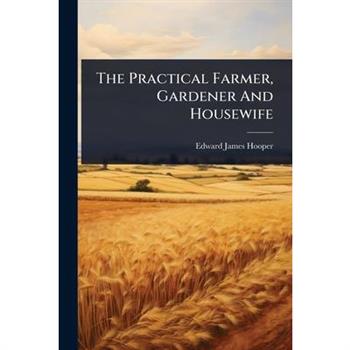

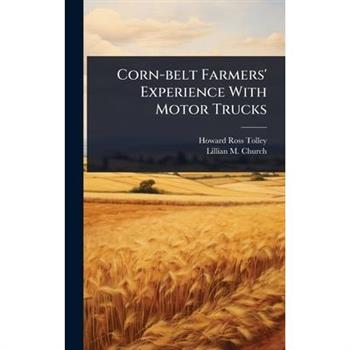
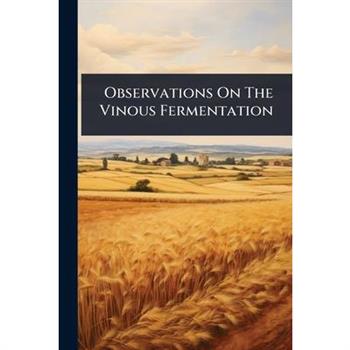
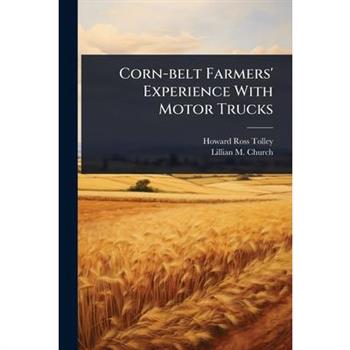
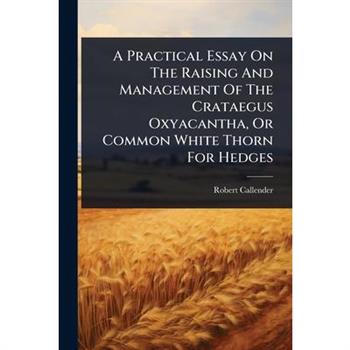
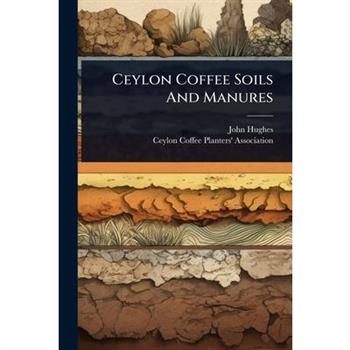

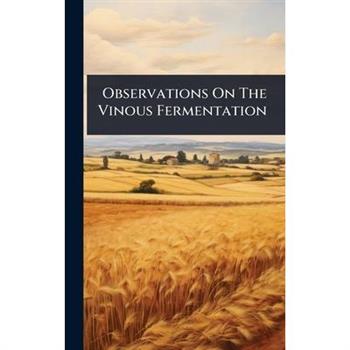
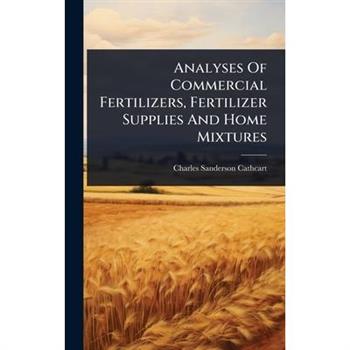
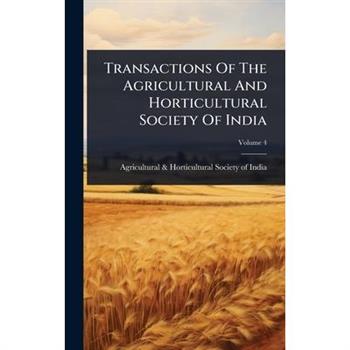
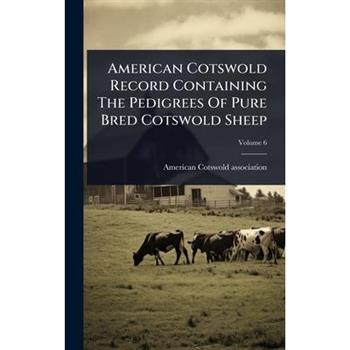
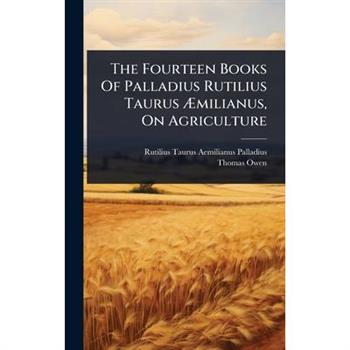
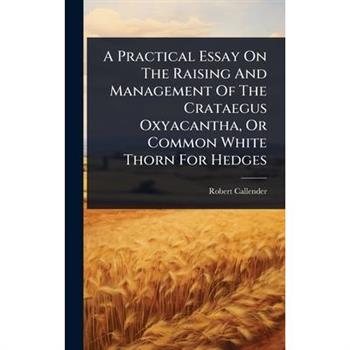


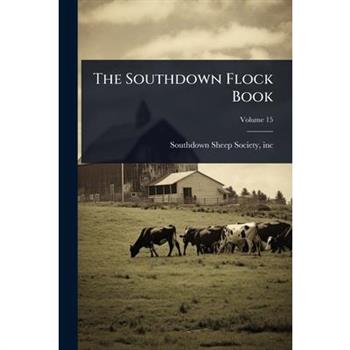


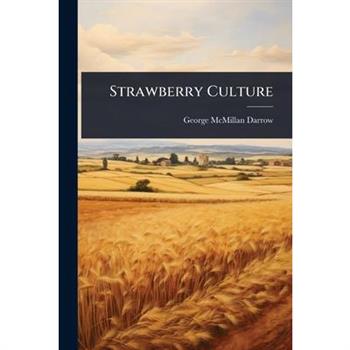
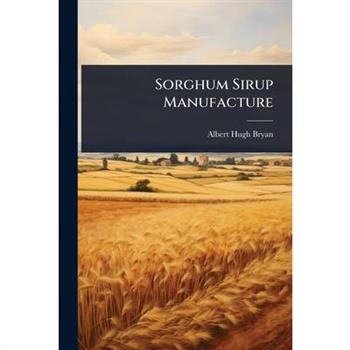



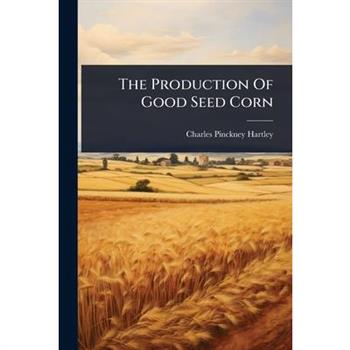
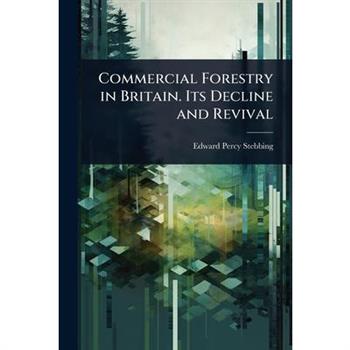

![Agriculture and Trade Machinery Series. [1923-1925] Agriculture and Trade Machinery Series. [1923-1925]](https://cdn.kingstone.com.tw/english/images/product/8538/9781024108538m.jpg?Q=47ef8)

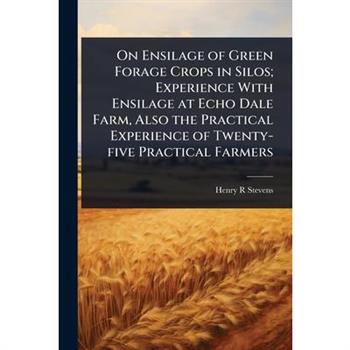
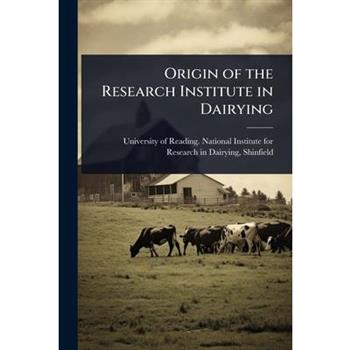
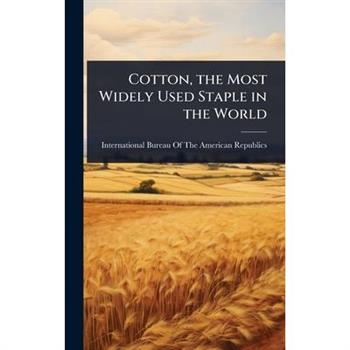
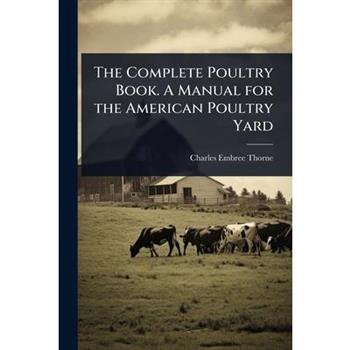
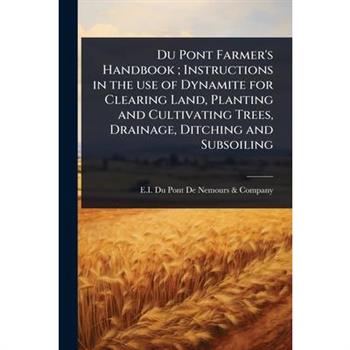
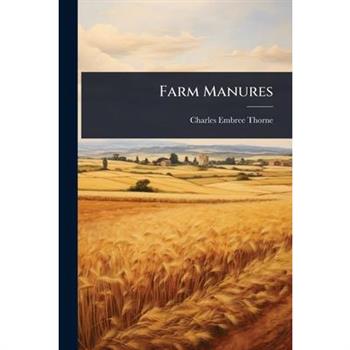
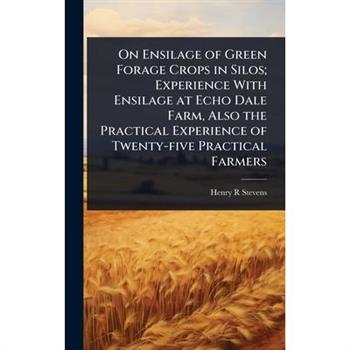

![Agriculture and Trade Machinery Series. [1923-1925] Agriculture and Trade Machinery Series. [1923-1925]](https://cdn.kingstone.com.tw/english/images/product/6213/9781024106213m.jpg?Q=5f59c)
